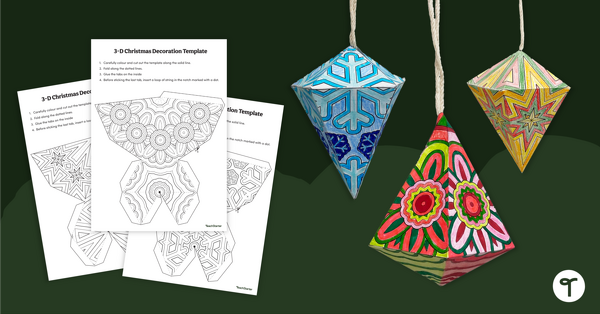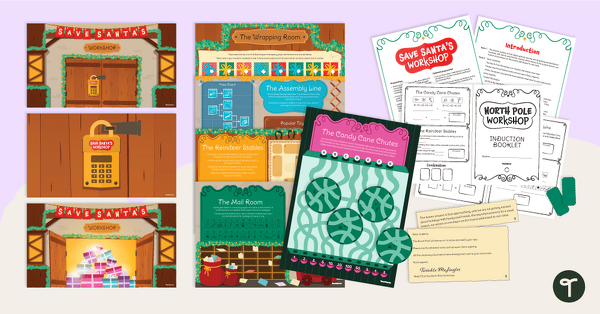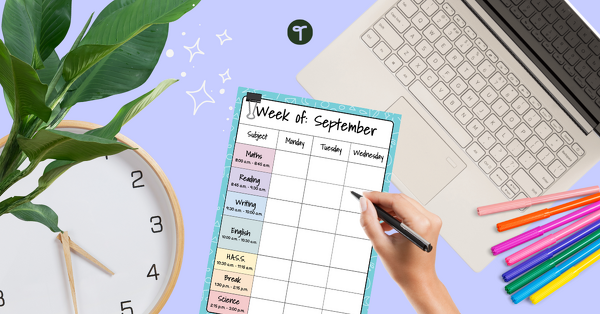
Set your classroom up for success
View our quick intro and see how Teach Starter can help you save time and engage your students.
Try For FreeTrending categories
Select a topic to start exploring our curriculum-aligned resources.
- Christmas 2025
- First Day of School 2026 Activities
- Homework Basket Activities
- Halloween 2025
- First Nations Australia
- National Simultaneous Storytime 2025
- Book Week 2025 — Book an Adventure
- Little Learners Month
- Homework
- Fairy Tales
- Auslan
- Remote Learning
- Bump It Up Data Walls
- Teacher Diary
- Recount Writing
- Earth Day 2025
- Buddy Activities
- Easter 2025
- Valentine's Day 2025
- Lunar New Year 2025
- NAIDOC Week 2025
- St. Patrick's Day 2025
- The Olympic Games
- World Wildlife Day 2025
- Guided Reading
- Origami
- Finding the Main Idea
- Compare and Contrast
- Mother's Day Australia 2025
- Timelines
Take lesson prep from
 to
to
 with Teach Starter
with Teach Starter
Popular right now
Explore trending resources that unlock the joy of teaching.
- Plus Plan

Digital Christmas Escape Room for the Classroom — Elf Investigation
This exciting Christmas escape room has been created by our teacher team to engage your upper years students this holiday season. Help the Mayor of Elfton catch the person responsible for some mischievous events in his town.
- Plus Plan

Mindful Colouring Baubles - Christmas Papercraft
Practise mindfulness while making ornaments with a set of elegant mindful colouring Christmas papercrafts.
- Free Plan

Tessellation Christmas Tree - Printable Project
Engage your students in the weeks before Christmas with a collaborative Christmas Tree Tessellation project.
- Free Plan

Australian Animals Christmas Mindful Colouring Pages
Bring an Aussie animal Christmas theme into the classroom with these printable mindful colouring pages.
- Free Plan

Elf Escape Room
Help Elfy, the classroom Elf escape the locked classroom and return to the North Pole with an exciting digital escape room!
- Plus Plan

Christmas Activity Sheets
Explore these 6 different Christmas activity sheets in the lead-up to Christmas.
- Plus Plan

Christmas Code Cracker - Classroom Breakout Game
Crack the Christmas Code to win a Classroom Breakout game to encourage collaboration and Christmas fun!
- Plus Plan

12 Days of Christmas Maths Activity
Try our 12 Days of Christmas Maths Activity pack to get your students thinking, calculating and solving problems related to the holiday song.
- Free Plan

Funky Reindeer Craft Template
Download the famous Teach Starter funky reindeer template! This Christmas craft activity is perfect for practicing Zentangle patterns.
- Plus Plan

Save Santa's Workshop – Whole Class Escape Game
Solve clues to save Santa's Workshop with this fun and festive escape room game.
- Free Plan

Jingle Jumble - Free Christmas Find-a-Word
Use a Christmas Find-a-Word printable to build vocabulary and spelling skills in your classroom this Christmas season.
- Plus Plan

Shutter Christmas Cards Printable Pack
Use a printable Christmas card template to create fun Christmas Shutter Cards with your students this holiday season.
Be the teacher you want to be
Connect with our experienced teachers as they share their stories, knowledge and tips.
-

International Dot Day Ideas for Celebrating at School
Join in the International Dot Day celebrations with your students by reading the inspiring story 'The Dot' and getting creative with activities!
-

Getting (& Staying) Organised – Creating Systems That Save You Time
Discover how effective classroom organisation strategies help you teach more and stress less with simple systems and powerful resources.
-

Paperwork & Documentation – Lighten the Load, Amplify the Impact
Learn how to simplify IEPs, behaviour plans, portfolios, and reporting with streamlined tools that save time and support your teaching practice.
-

Smarter Assessment, Faster Feedback: How Teachers Can Reclaim Time and Amplify Impact
Learn how Teach Starter’s teacher-designed trackers, rubrics, and templates help educators assess smarter, give feedback faster, and reclaim valuable time.
-

How to Save Hours Differentiating Your Lesson Plans
Master quick, effective differentiation with Teach Starter's editable templates, engaging activities, and curriculum-aligned units.
-

10 National Simultaneous Storytime Classroom Activities for 2025
Explore curriculum-aligned National Simultaneous Storytime ideas that will take you from reading time into science, writing and more!